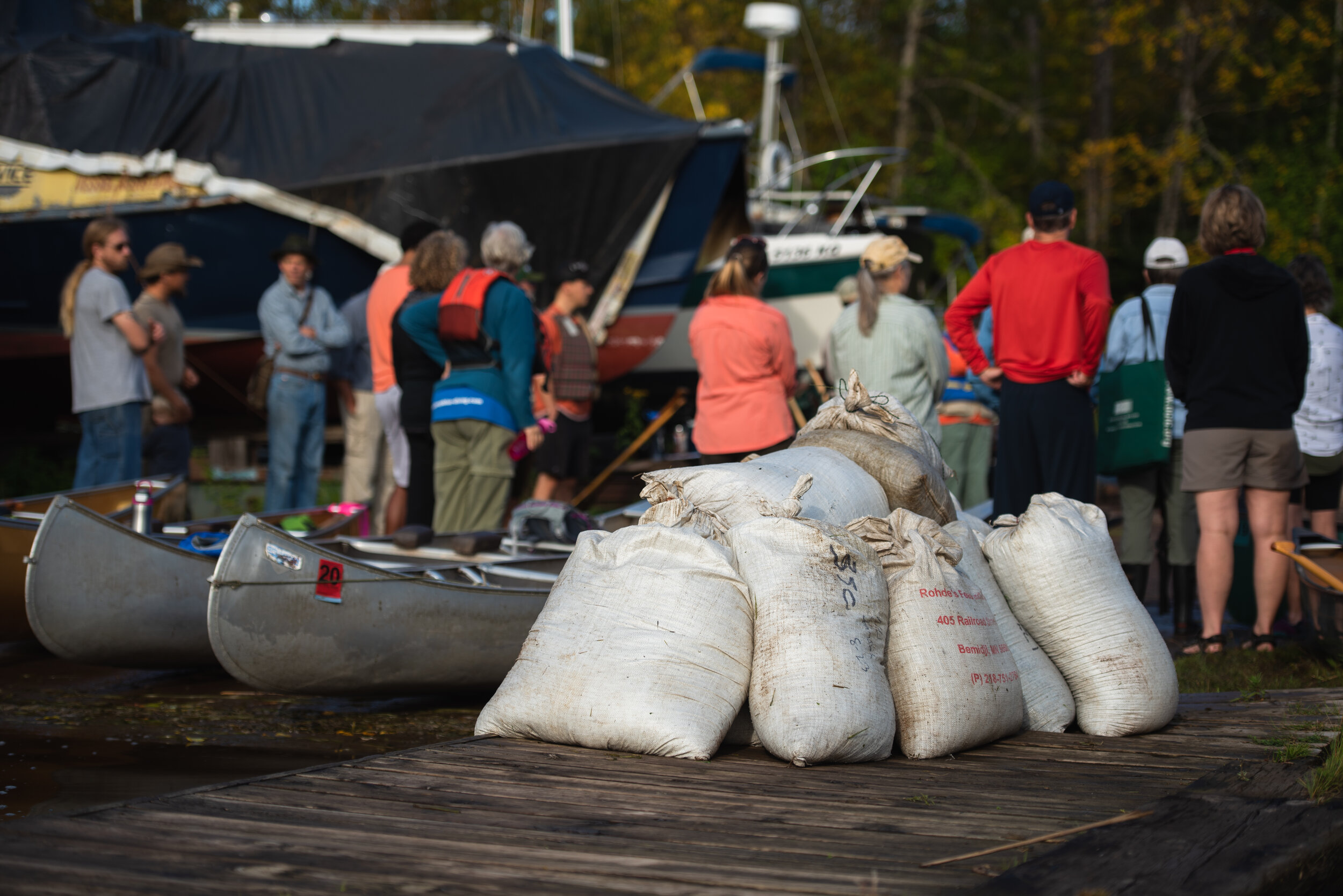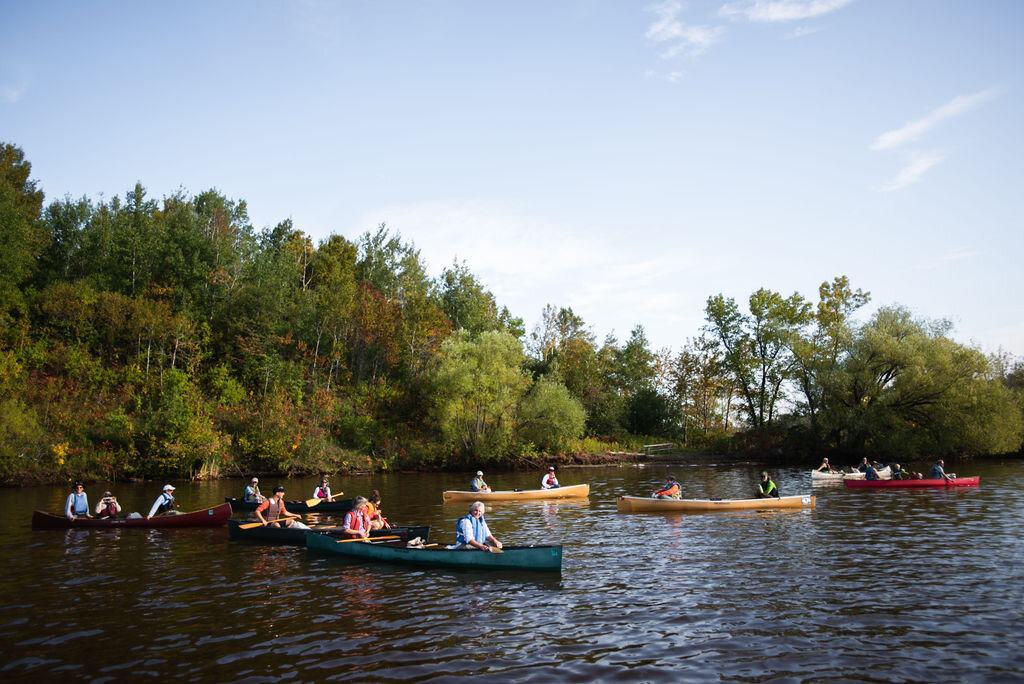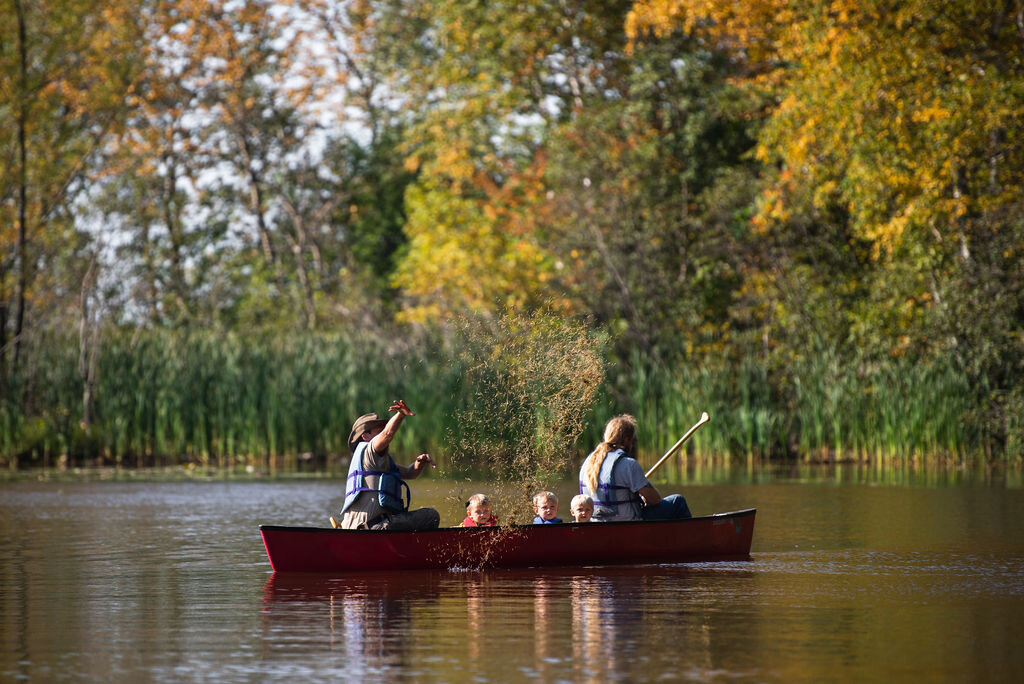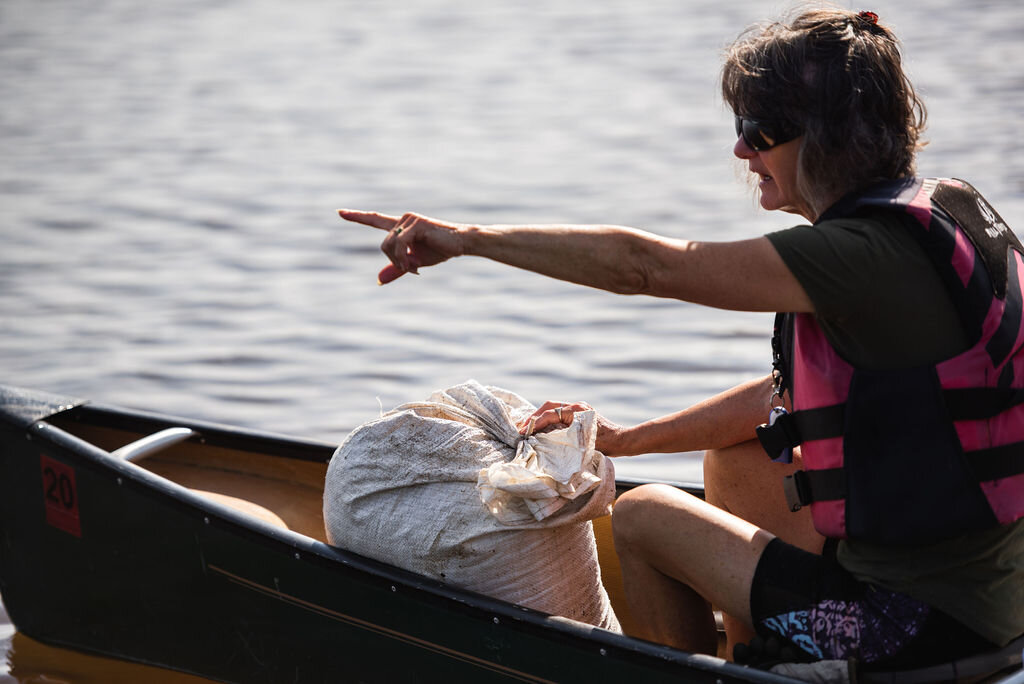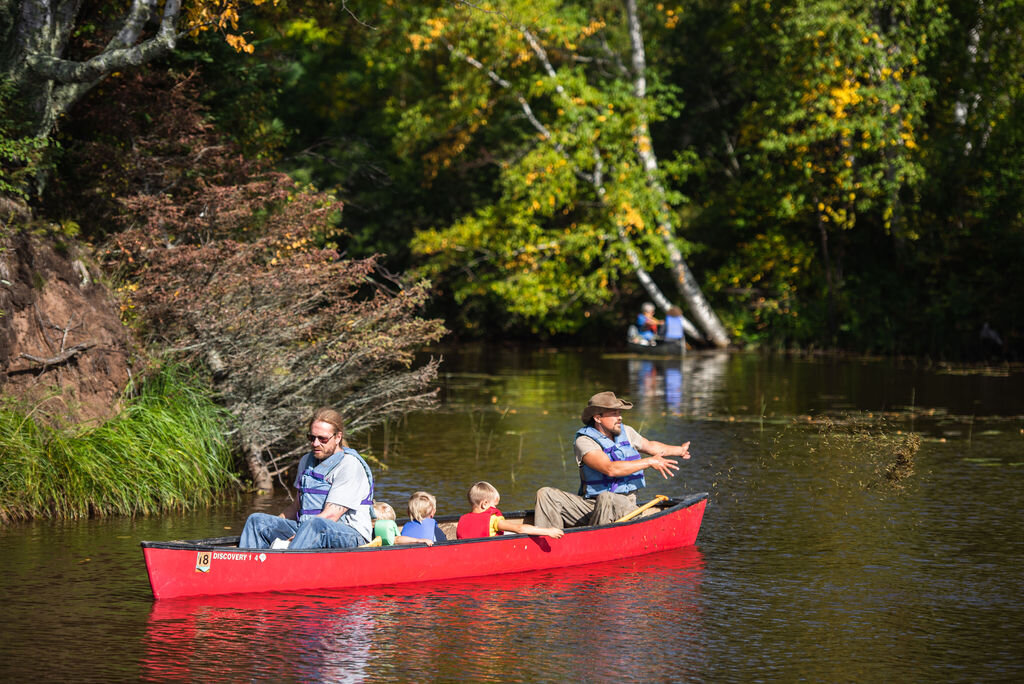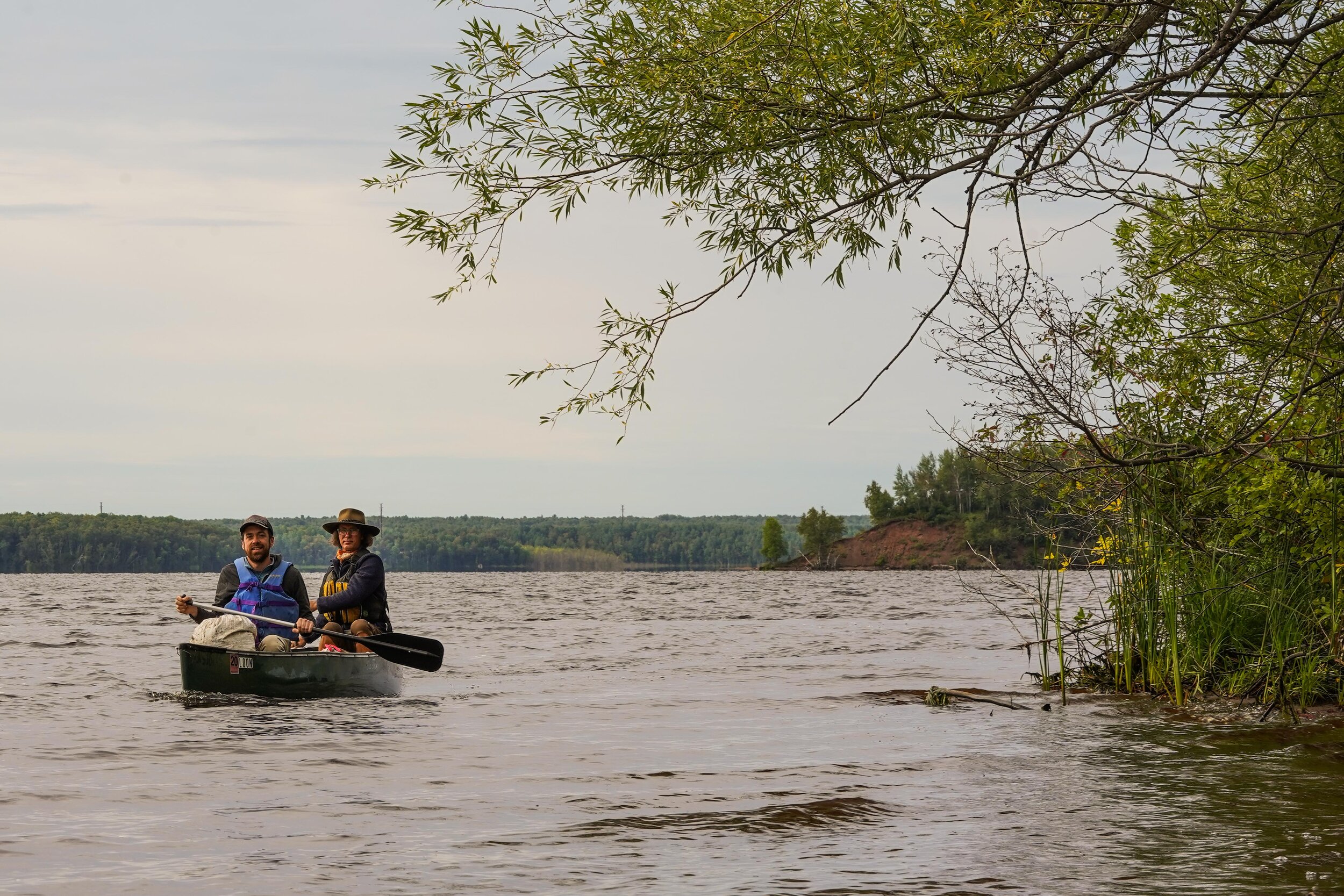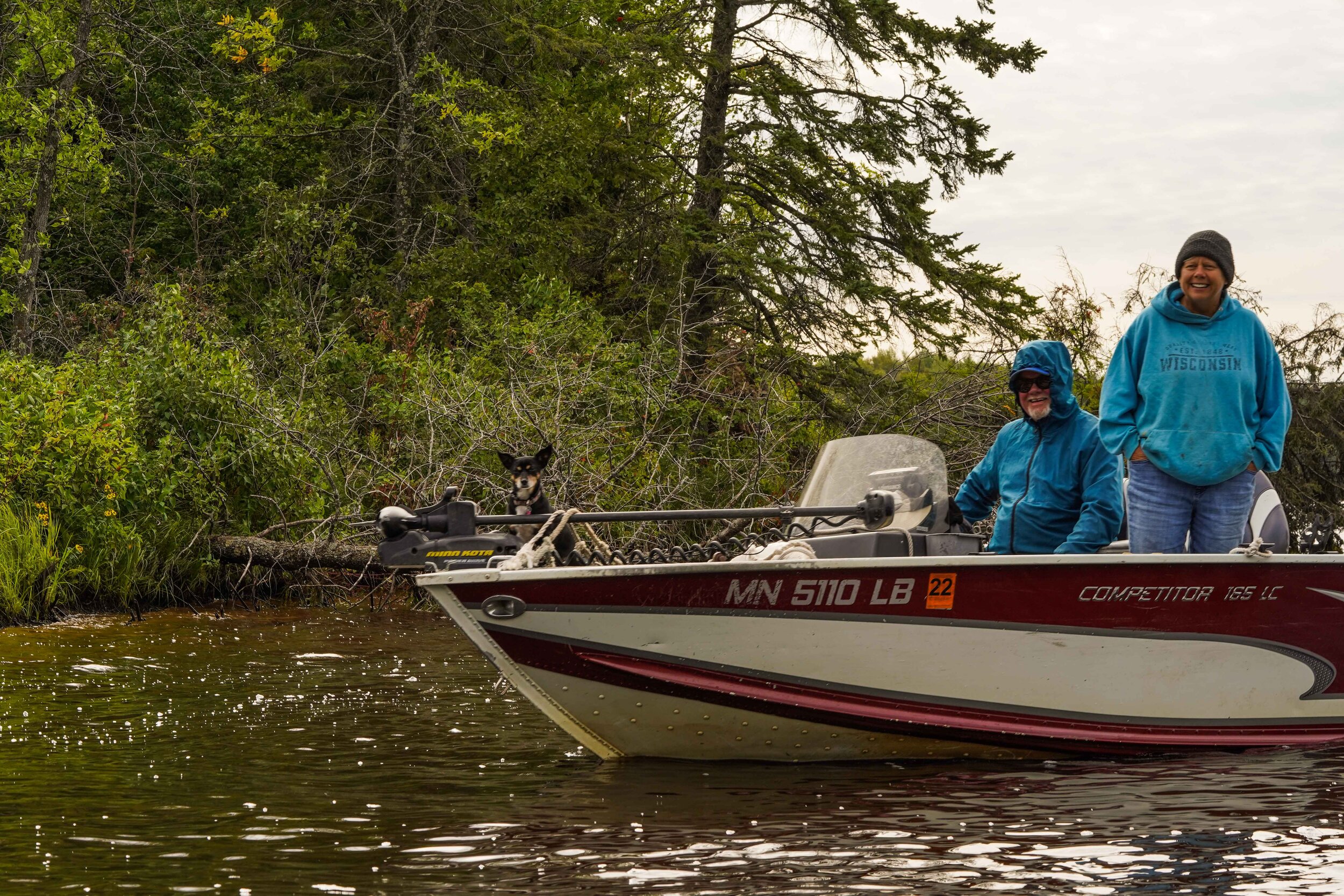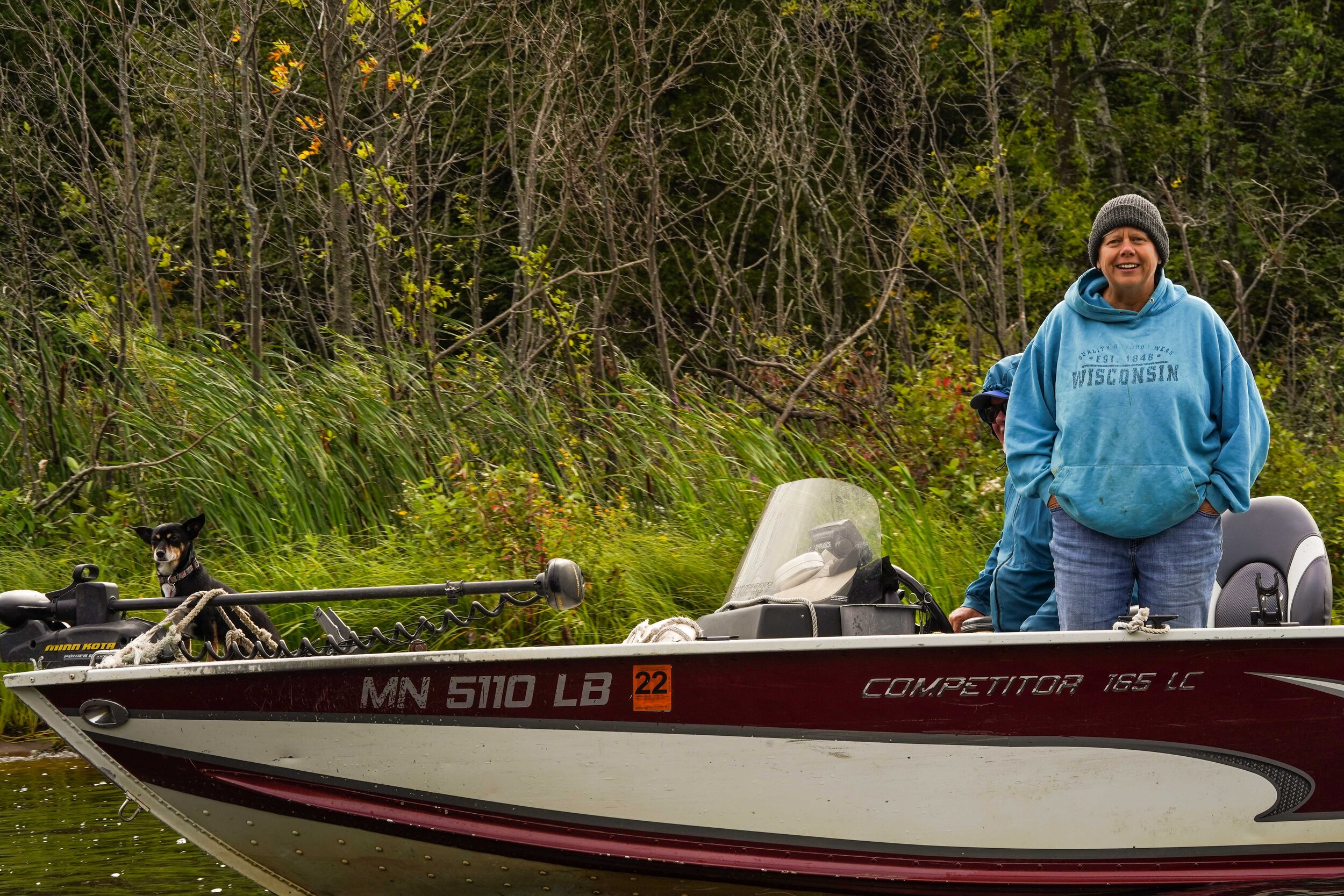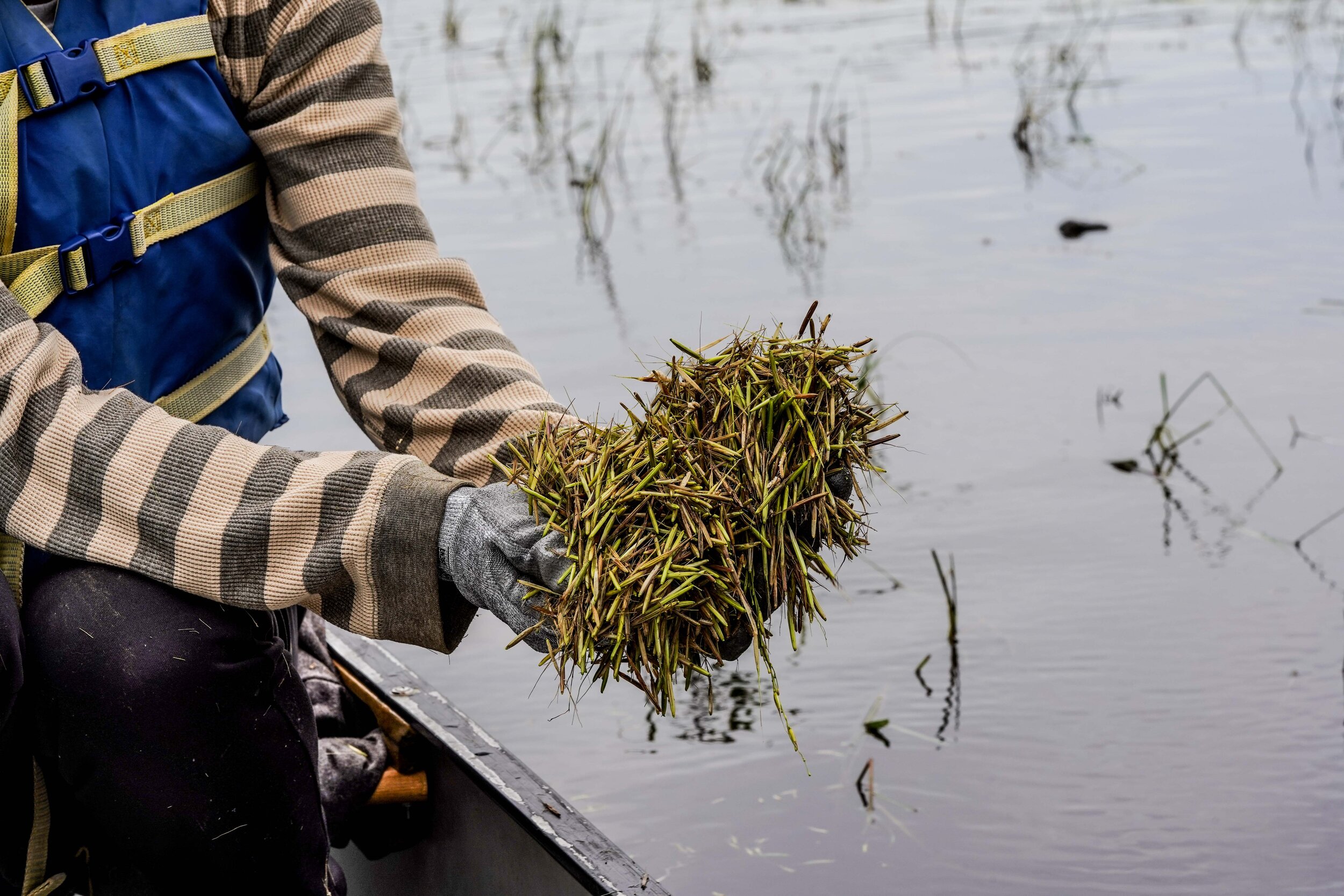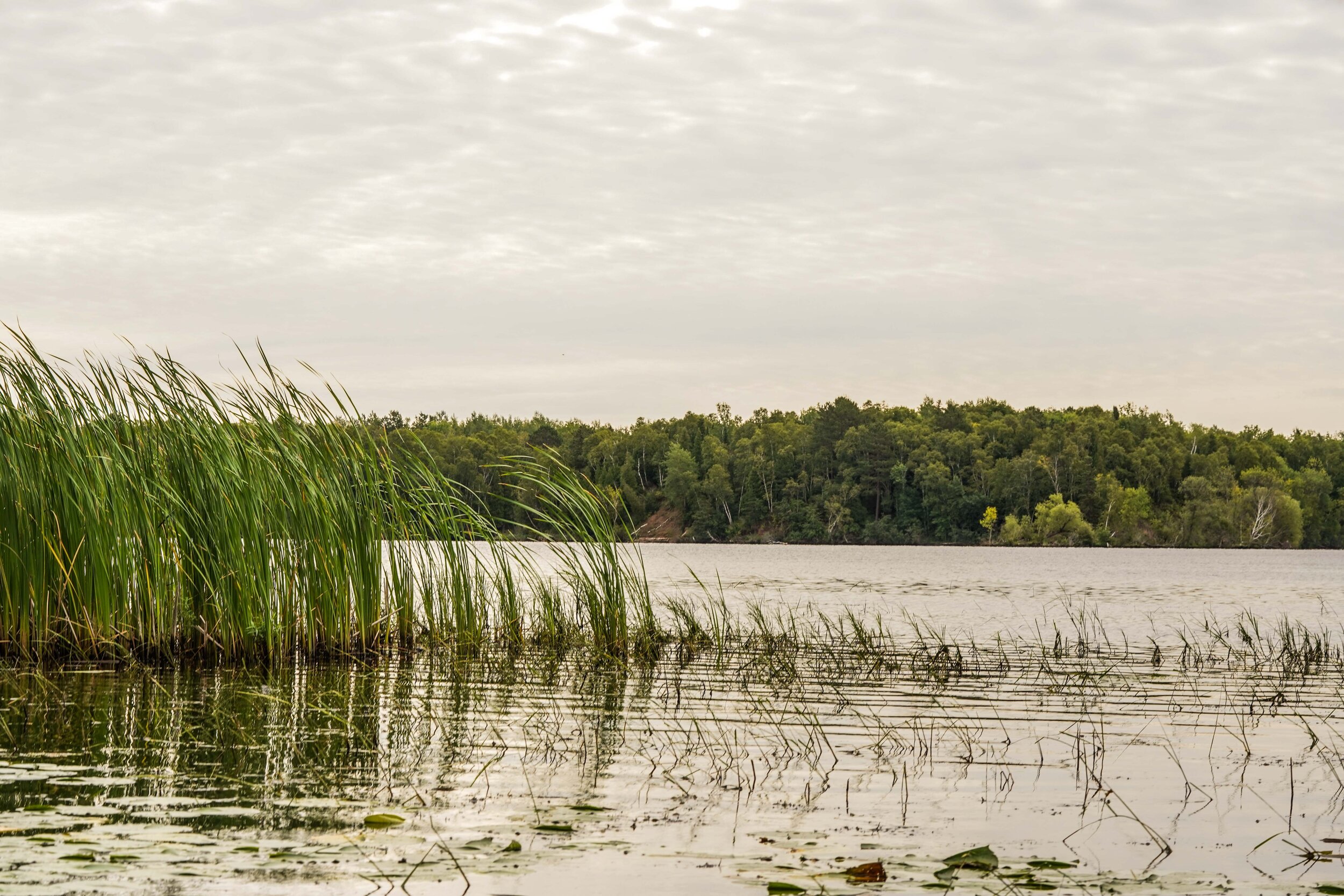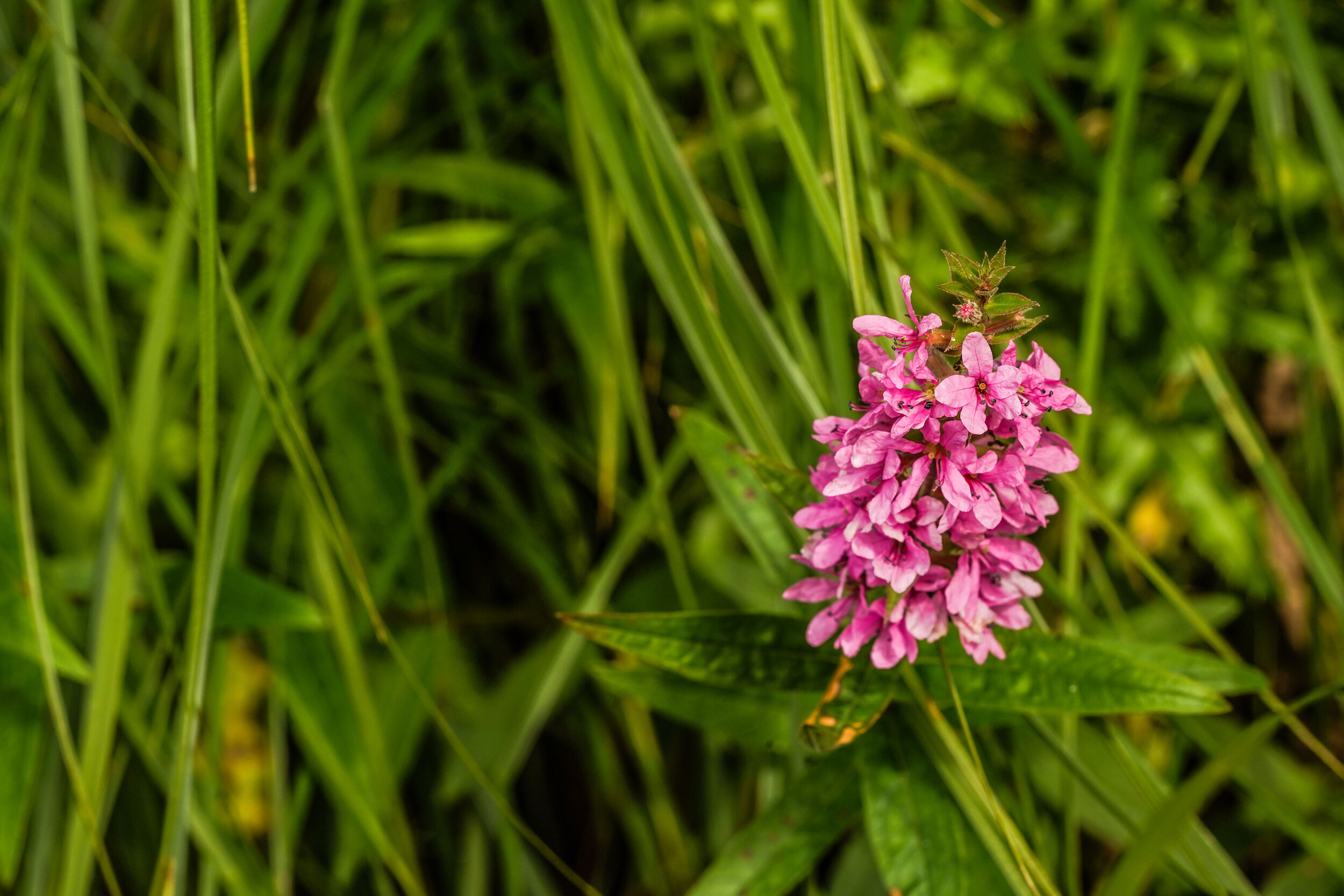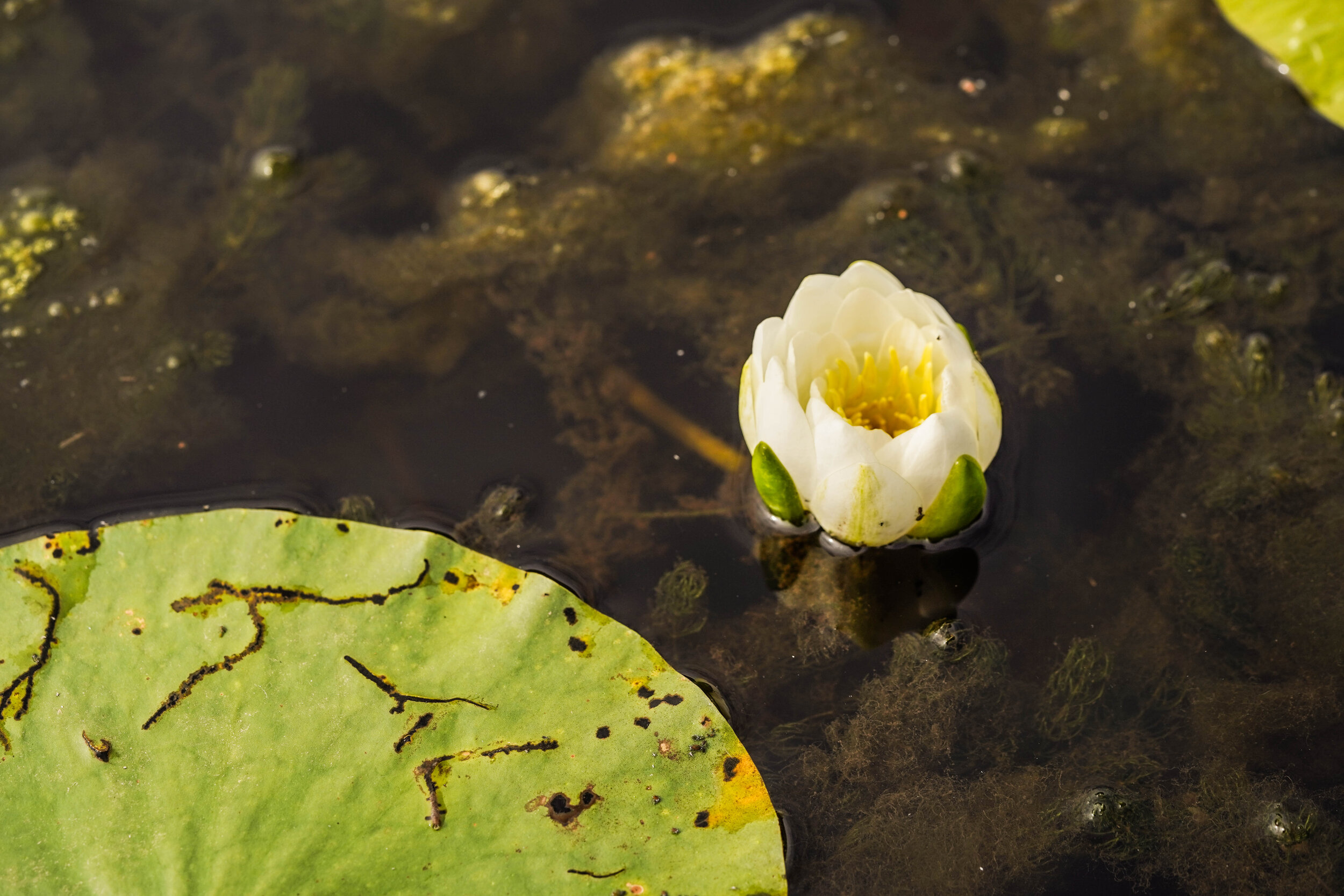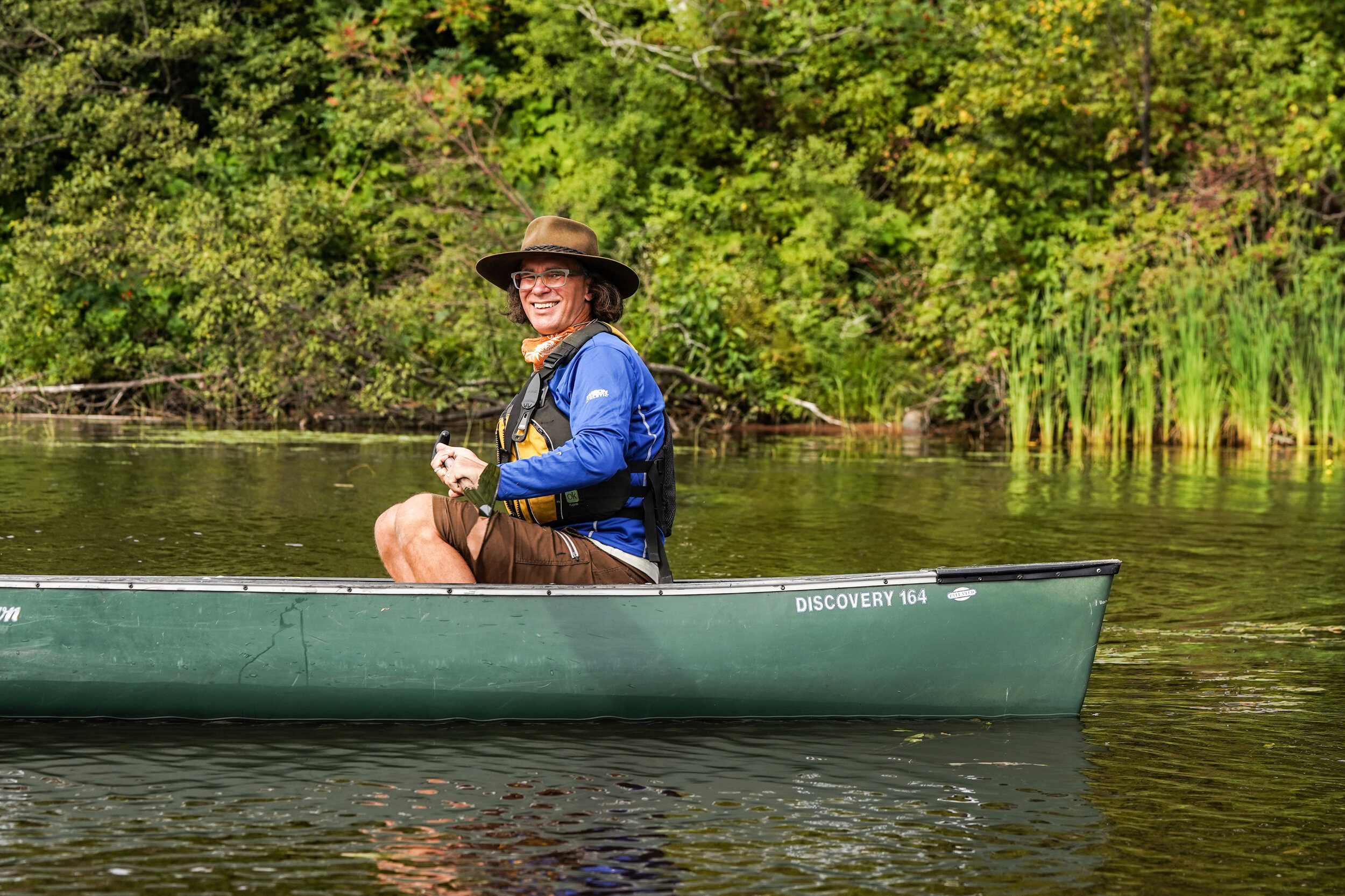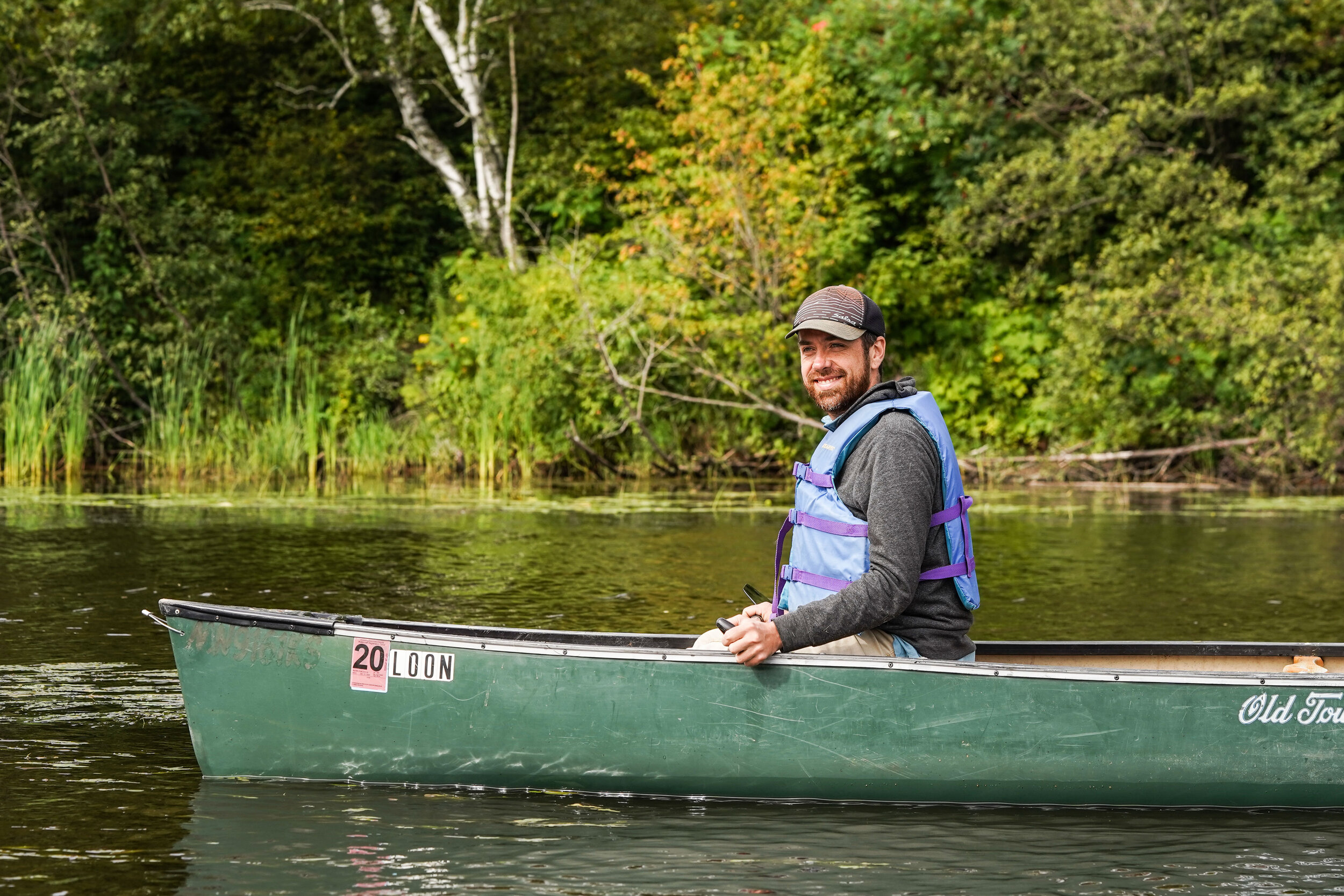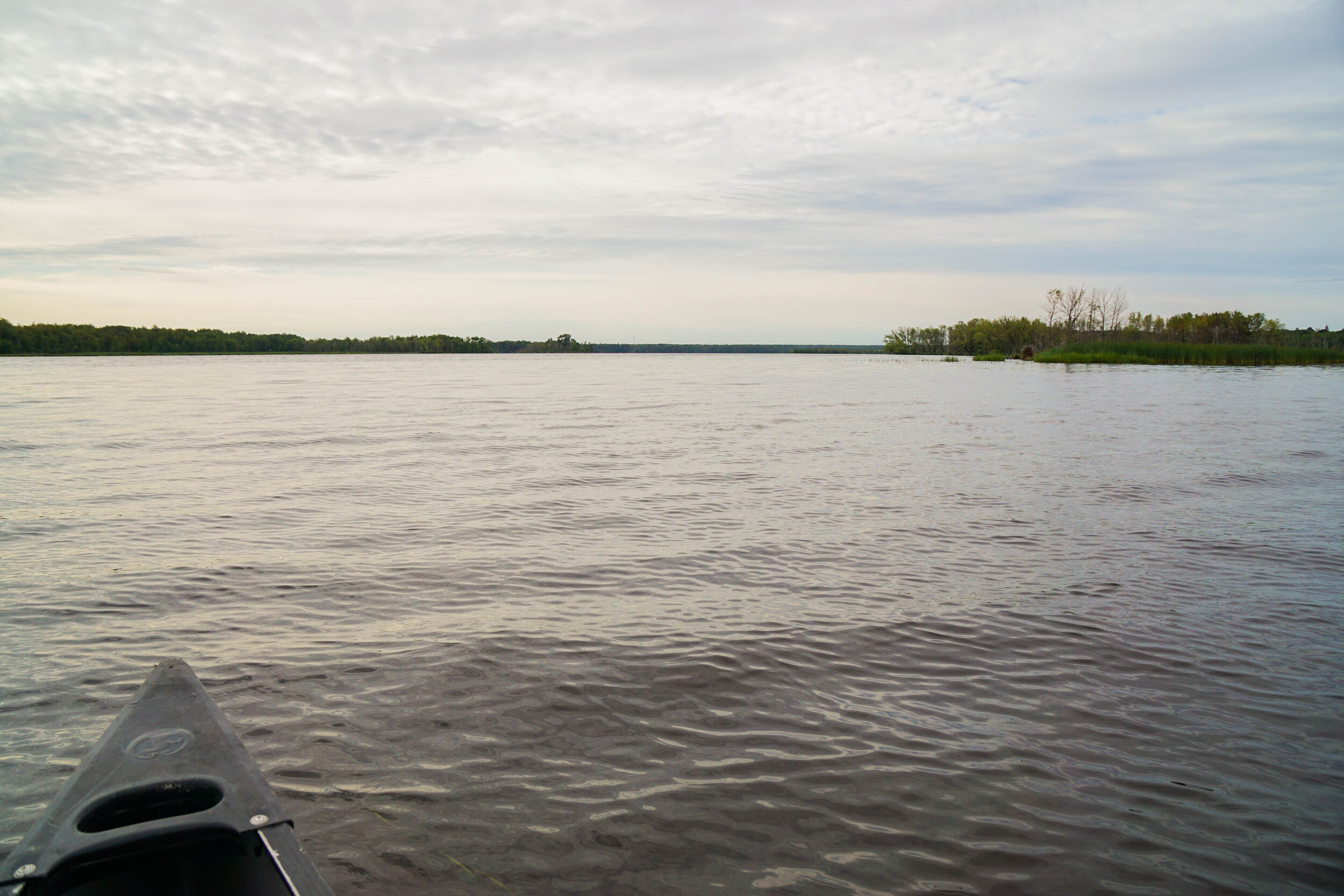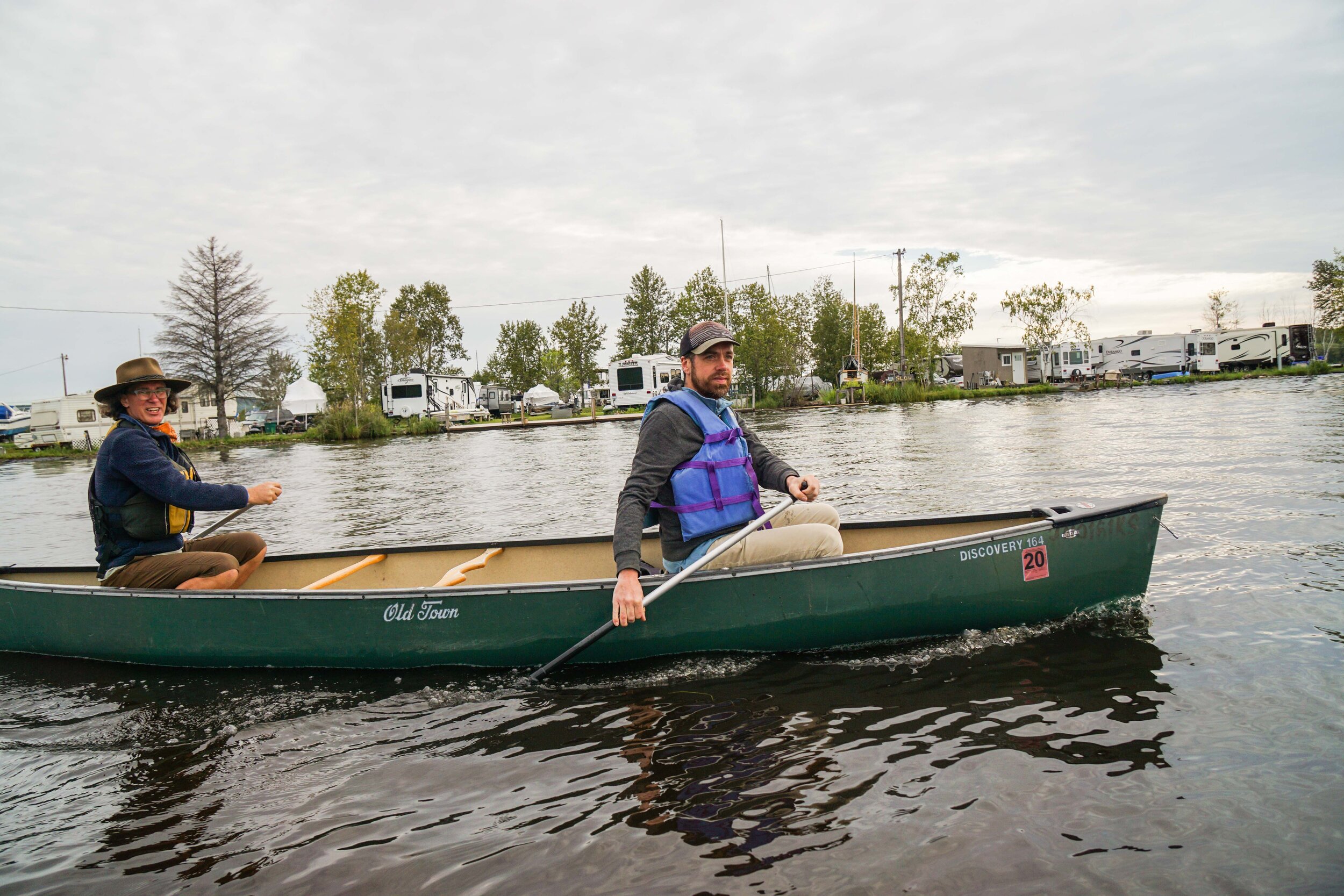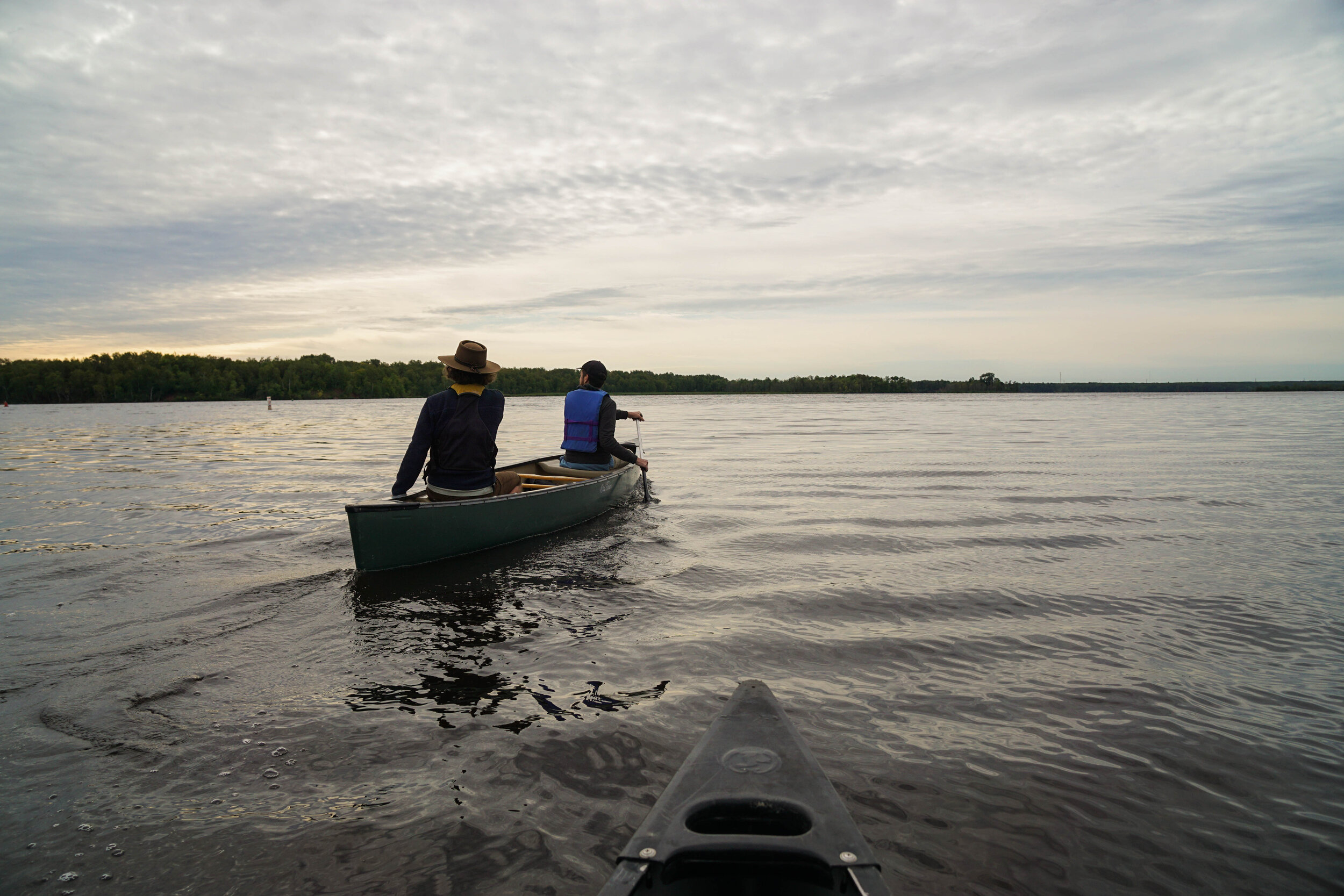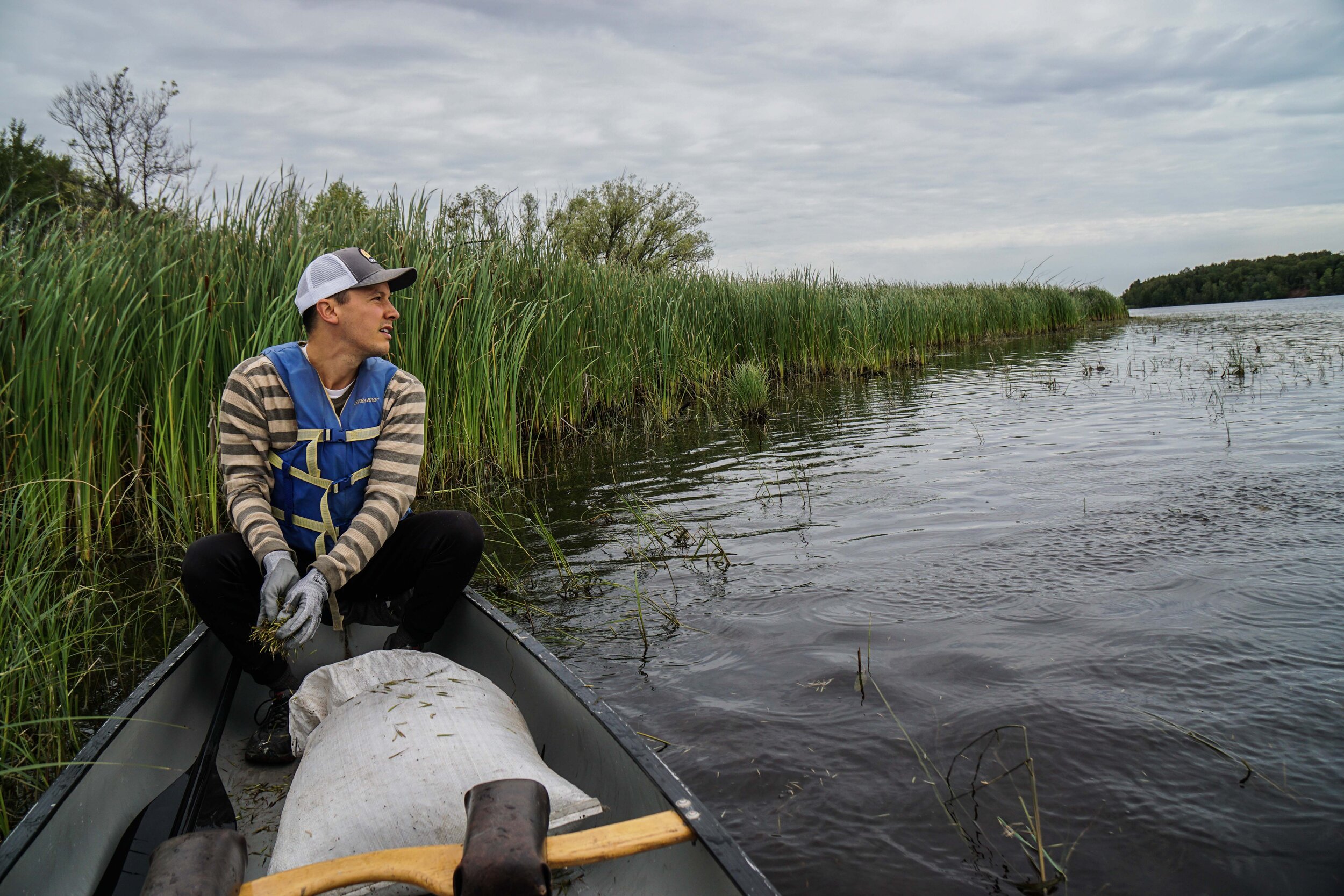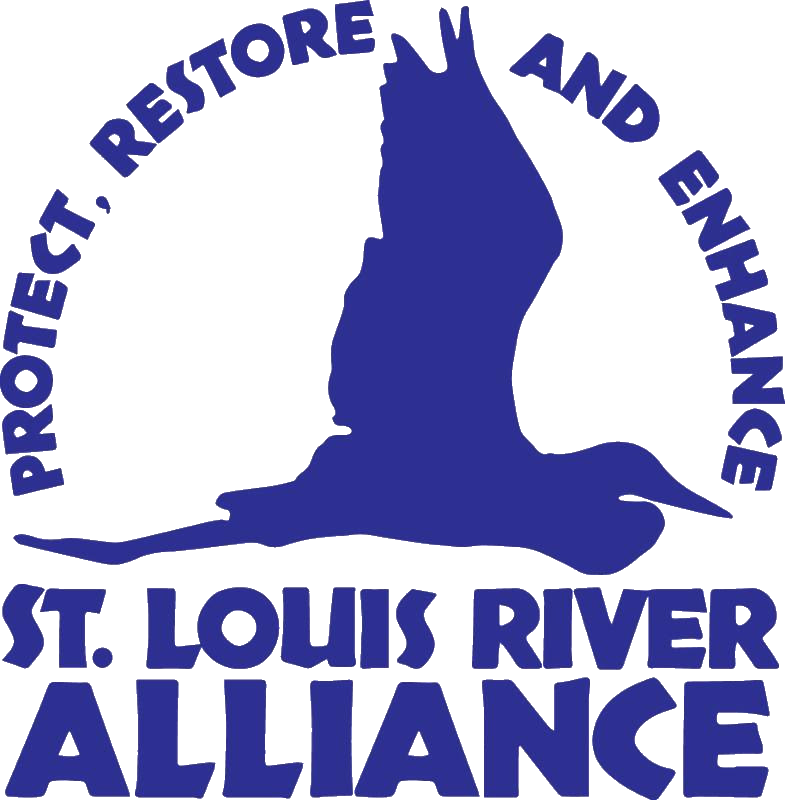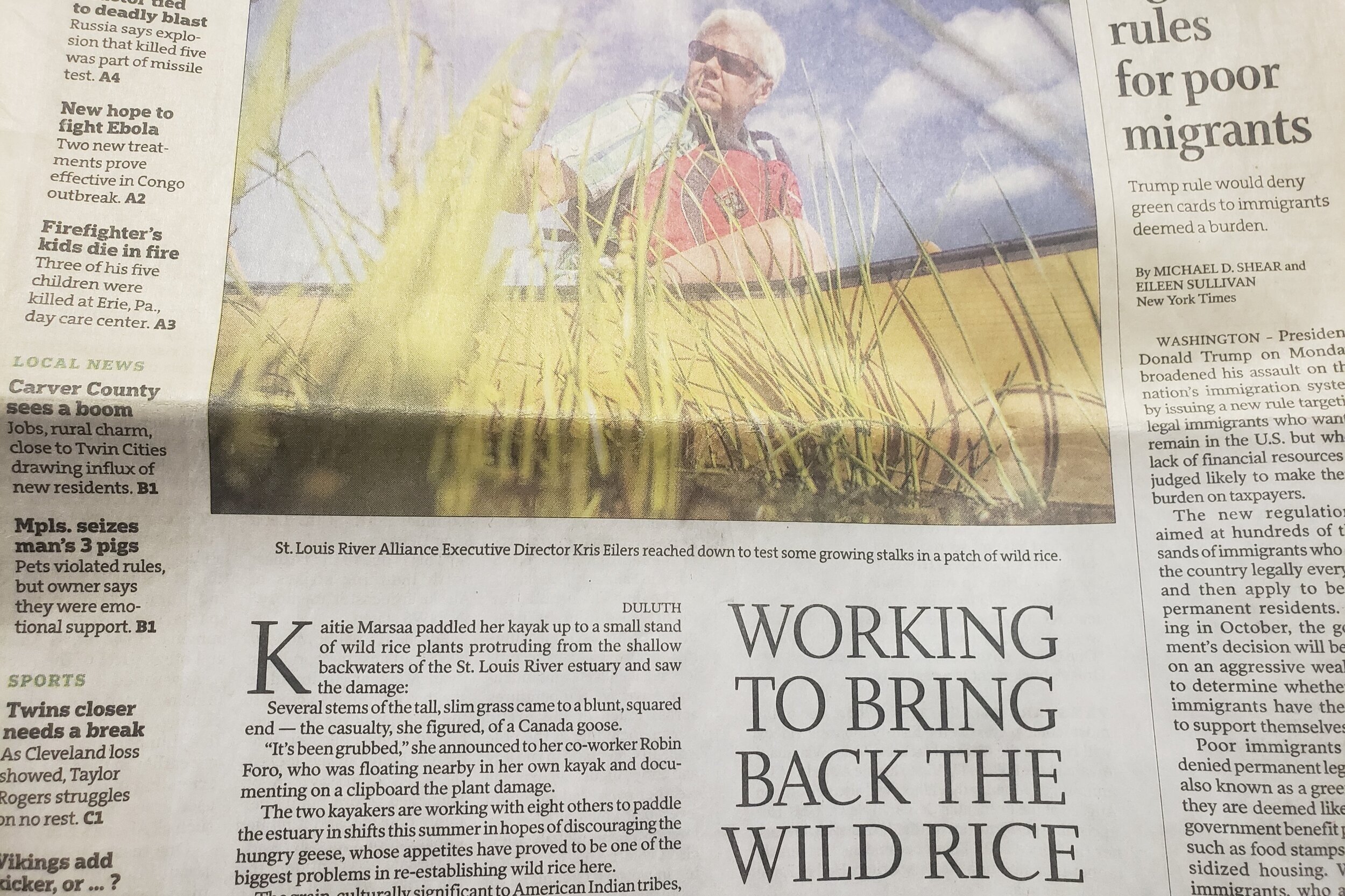Wild Rice Project
Wild rice, or manoomin in Ojibwe, has been a vital nutritional grain for indigenous people for centuries. It still plays a central role in the cultural life of the Ojibwe people today. In the St. Louis River Estuary, wild rice is a key plant and food source for waterfowl. It also provides important habitat for fish and wildlife.
Historically, the St. Louis River estuary may have had one of the richest concentrations in the region. But, due to industrial development, pollution, and logging, it was nearly wiped out. There is a collaborative effort in the AOC process to restore up to 275 acres of wild rice over the next 10 years.
The St. Louis River Alliance partners with the Wisconsin DNR and others to help plant wild rice, monitor the beds, and collect data.
Additional Wild Rice Resources:
Wild Rice Monitoring & Active Goose Deterrent
Geese are a huge determent to wild rice plants, often eating the plants before they can re-seed themselves. In order to help protect the wild rice, the St. Louis River Alliance, working under a contract from the Minnesota Land Trust, hired 11 seasonal, part-time staff members to monitor seven bays (split into three zones) in the Estuary from Mid-July to Mid-August 2019. 2-3 paddlers monitored each zone in the morning and evening hours to coincide with active goose feeding times. The most effective deterrent methods were splashing water near the geese and the placement of swan decoys in the bay. Currently, the SLRA is seeking additional funding to continue this important work.
Planting Wild Rice at Clough Island
Beginning in 2014, the SLRA has planted wild rice at Clough Island with funding from the WDNR. Most recently in September 2019, the St. Louis River Alliance purchased 1500 lbs. of wild rice seed and held a volunteer planting event to plant the seeds on the east side of Clough Island. Irene Folstrom kicked off the volunteer event by sharing a short program on Ojibwe culture, and the significance of manoomin (wild rice). The SLRA and 20 member volunteers, paddled from Spirit Lake Marina to the island to cast the seeds into the wild rice bed.
About Wild Rice
Northern wild rice, Manoomin (Ojibwe), or Zizania palustria (scientific name), is an important component to the St. Louis River estuary, because of its value as both a cultural and ecological resource. It is tied to the Migration Story of the Ojibwe people, and it provides an important food source for wild-life, and local inhabitants.
Wild rice was once abundant in the St. Louis River estuary. From the 1930’s to the 1960’s, the St. Louis River estuary contained between 600 and 1,000 acres of wild rice. Over the past 50 years, its abundance and distribution has been reduced to a few remnant stands. The cause for the decline in wild rice abundance include industry development in the estuary and water quality impacts from land use and point source inputs. Despite water quality improvements in the St. Louis River estuary, wild rice populations have not rebounded.
The Plant
The species “Zizania palustris” is an annual plant that grows from seed each year. It begins to grow in lakes and streams after ice out in the spring. The plant typically grows best in shallow water depths (1-3 feet) in areas containing soft, organic bottoms.
Wild rice grows to the water surface usually by mid-June. During this time, wild rice plants lay flat on the water surface and can form vast leafy mats. During this floating-leaf stage wild rice is extremely susceptible to water level fluctuations. Plants can be uprooted and washed away due to increased water levels.
During July, wild rice will grow vertically and can eventually stand up to 6-8 feet out of the water. Rice kernels begin to harden in late July to early August. These kernels then become the seed (or grain) of the plant.
Ripe wild rice seed will eventually fall into the water if not harvested. Seeds sink and settle into the sediment at the bottom of the lake or river. With favorable conditions, seeds will grow into wild rice plants beginning the next spring. However, wild rice seed also has the ability to remain dormant until favorable conditions are encountered. This dormancy can last for years if the seed remains in the water.
Wild rice is ripe when the seeds are formed and ready to fall off. It is during this time that harvest can occur. Depending on conditions, wild rice is typically not ripe and ready for harvest until late August or early September in northeastern Minnesota.
Manoomin Restoration
The Manoomin Restoration Partnership – St. Louis River Estuary; which includes Minnesota Department of Natural Resources (MNDNR), Wisconsin Department of Natural Resources (WIDNR), tribal partners, and non-profits; are seeking to restore at least 275 acres of wild rice in a ten years’ period from 2014-2024. The plan outlines the specific implementation strategies including locations and practices to restore wild rice in each of the 27 prioritized areas.
Successful wild rice restoration normally requires 3-5 years off seeding due to annual fluctuation in precipitation and water levels. SLRA and their volunteers have seeded approximately 10 acres of the priority area beginning in 2015 and will reseed wild rice over that same area in years to come. The 10-acre area was seeded by Fond du Lac Band of Lake Superior Chippewa in 2016.
Cultural Significance
Manoomin means “good seed” in the Ojibwe language. This plant has played a major role in the lives of the Ojbwe people, historically and today. According to their oral tradition, prophecies directed the Lake Superior Ojibwe to migrate from their historic homeland on the Atlantic coast and travel west until they found the “place where food grows on the water.” They were instructed to stop when they found this place, as it would be their new home. They depended on the annual harvest and preservation of this precious and nutritious food to survive the long winters.
Today, manoomin remains a staple of Ojibwe diets. It is culturally and spiritually important to the Ojibwe people and a necessary item to be served at important community feasts and ceremonies. High in protein, yet low in fat and calories, wild rice has a very high nutritional value. It can be stored for a very long time which is an added advantage when other sources of food are scarce. Wild rice is sacred to the Ojibwe people who still live in the Great Lakes region.
Role in Ecosystem
Wild Rice is an importance keystone species in the ecology of the St. Louis River and other Great lakes waters. Its nutritious seeds are valuable food for scores of waterfowl and wildlife, and humans. It also provides roosting and essential brood cover for the young. Wild rice can help maintain water quality by binding loose soils, tying up nutrients and slowing winds across shallow wetlands. Because of its high nutritional value and ability to increase water quality, it literally causes a cascade of life to the ecosystem. Wild rice is an indicator of clean water. A true ecological treasure!
Additional Wild Rice Resources
PHOTOS
2019 & 2020 Wild Rice Planting in the St. Louis River Estuary




